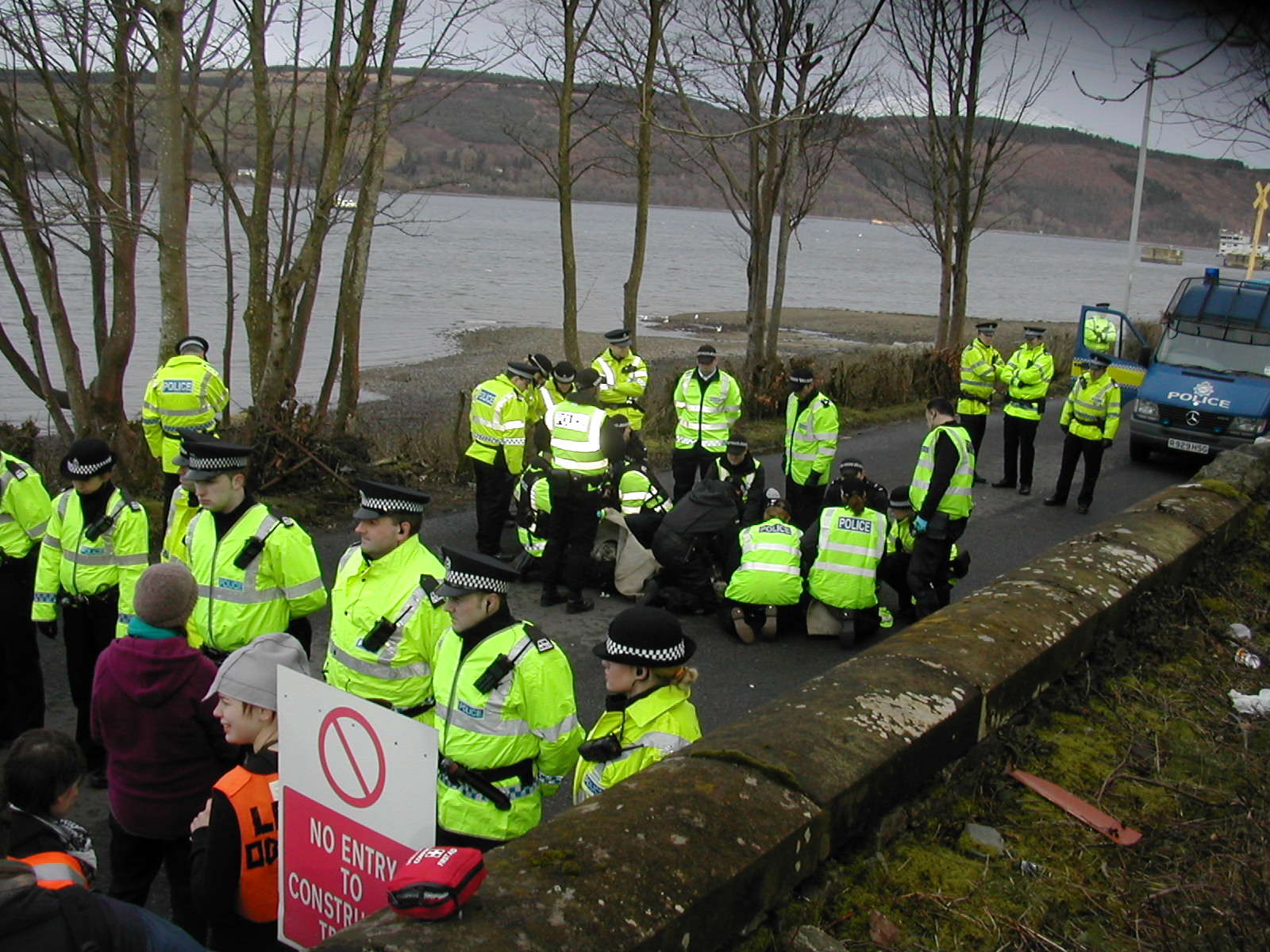|
Churchill-class Submarine
The three Repeat ''Valiant''-class submarines, sometimes known as the ''Churchill'' class,Hool, Jack, and Nutter, Keith, ''Damned Un-English Machines, a history of Barrow-built submarines'', pub Tempus, 2003, page 177. were nuclear-powered fleet submarines which served with the Royal Navy from the 1970s until the early 1990s. The ''Churchill'' class was based on the older , but featured many internal improvements. The lead vessel was named after the former Prime Minister and First Lord of the Admiralty Winston Churchill. was the most famous of the class, sinking the Argentinian cruiser during the 1982 Falklands War. , this is the only instance of a nuclear-powered submarine of any nation sinking an enemy ship by torpedo. Design The ''Churchill''s carried a crew of 103 and had a full load displacement of 4,900 tons whilst dived. They were long, had a beam of and a draught of . Their single pressurized water-cooled reactor supplied steam to two English Electric geared t ... [...More Info...] [...Related Items...] OR: [Wikipedia] [Google] [Baidu] |
HMS Conqueror (S48)
HMS ''Conqueror'' was a British Nuclear marine propulsion, nuclear-powered fleet submarine which served in the Royal Navy from 1971 to 1990. She was the third submarine of her class, following the earlier and , that were all designed to face the Soviet Navy, Soviet threat at sea. She was built by Cammell Laird at Birkenhead. ''Conqueror'' the only nuclear-powered submarine to have engaged an enemy ship with torpedoes, sinking the cruiser ARA General Belgrano, ''General Belgrano'' during the 1982 Falklands War.The only other submarine to sink a warship since World War II is the Pakistan Navy's PNS Hangor, PNS ''Hangor'', during the Indo-Pakistani War of 1971. Construction ''Conqueror'' was ordered on 9 August 1966 and was Keel laying, laid down at Cammell Laird's Birkenhead shipyard on 5 December 1967; she was Ceremonial ship launching, launched on 28 August 1969.Moore 1985, p. 617. Construction was delayed by slow working by Cammell Laird's workforce, and sabotage of ... [...More Info...] [...Related Items...] OR: [Wikipedia] [Google] [Baidu] |
Beam (nautical)
The beam of a ship is its width at its widest point. The maximum beam (BMAX) is the distance between planes passing through the outer extremities of the ship, beam of the hull (BH) only includes permanently fixed parts of the hull, and beam at waterline (BWL) is the maximum width where the hull intersects the surface of the water. Generally speaking, the wider the beam of a ship (or boat), the more initial stability it has, at the expense of secondary stability in the event of a capsize, where more energy is required to right the vessel from its inverted position. A ship that heels on her ''beam ends'' has her deck beams nearly vertical. Typical values Typical length-to-beam ratios ( aspect ratios) for small sailboats are from 2:1 (dinghies to trailerable sailboats around ) to 5:1 (racing sailboats over ). Large ships have widely varying beam ratios, some as large as 20:1. Rowing shells designed for flatwater racing may have length to beam ratios as high as 30:1, while a cor ... [...More Info...] [...Related Items...] OR: [Wikipedia] [Google] [Baidu] |
Use Of The Jolly Roger By Submarines
The Jolly Roger is a symbol that has been used by submarines, primarily those of the Royal Navy Submarine Service and its predecessors. The practice came about during World War I: remembering comments by First Sea Lord Admiral Sir Arthur Wilson, who complained that submarines were "underhanded, unfair, and damned un-English" and that personnel should be hanged as pirates, Lieutenant Commander Max Horton began flying the flag after returning from successful patrols. Initially, Horton's submarine flew an additional flag after each successful patrol, but when there was no room for more, the practice was changed to a single large flag, onto which symbols indicating the submarine's achievements were sewn. The practice of flying the Jolly Roger was adopted by some other submarines during World War I, but became more widespread in World War II. Flotilla commanders began to issue flags to submarines, and procedures were drafted for usage. Although some sources report the use of the flag ... [...More Info...] [...Related Items...] OR: [Wikipedia] [Google] [Baidu] |
Faslane
His Majesty's Naval Base, Clyde (HMNB Clyde; also HMS ''Neptune''), primarily sited at Faslane on the Gare Loch, is one of three operating bases in the United Kingdom for the Royal Navy (the others being HMNB Devonport and HMNB Portsmouth). It is the navy's headquarters in Scotland and is best known as the home of Britain's nuclear weapons, in the form of nuclear submarines armed with Trident missiles. History Faslane was first constructed and used as a base in the Second World War. During the 1960s, the British Government began negotiating the Polaris Sales Agreement with the United States regarding the purchase of a Polaris missile system to fire British-built nuclear weapons from five specially constructed submarines. In the end, only four were constructed; , , and . These four submarines were permanently based at Faslane. Faslane itself was chosen to host these vessels at the height of the Cold War because of its geographic position, which forms a bastion on the relative ... [...More Info...] [...Related Items...] OR: [Wikipedia] [Google] [Baidu] |
1982
Events January * January 1 – In Malaysia and Singapore, clocks are adjusted to the same time zone, UTC+8 (GMT+8.00). * January 13 – Air Florida Flight 90 crashes shortly after takeoff into the 14th Street bridges, 14th Street Bridge in Washington, D.C., United States, then falls into the Potomac River, killing 78 people. * January 18 – 1982 Thunderbirds Indian Springs Diamond Crash: Four Northrop T-38 aircraft of the United States Air Force crash at Indian Springs Air Force Auxiliary Field, Nevada, killing all 4 pilots. * January 26 ** Mauno Koivisto is elected President of Finland. ** Unemployment in the United Kingdom increases by 129,918 to 3,070,621, a post-war record number. * January 27 – The Garret FitzGerald government of the Republic of Ireland is defeated 82–81 on its budget; the Members of the 22nd Dáil, 22nd Dáil Éireann is dissolved. * January 30 – The first computer virus, the Elk Cloner, written by 15-year old Rich Skrenta, is found. It infects A ... [...More Info...] [...Related Items...] OR: [Wikipedia] [Google] [Baidu] |
Pennant Number
In the Royal Navy and other navies of Europe and the Commonwealth of Nations, ships are identified by pennant number (an internationalisation of ''pendant number'', which it was called before 1948). Historically, naval ships flew a flag that identified a flotilla or type of vessel. For example, the Royal Navy used a red burgee for torpedo boats and a pennant with an H for torpedo boat destroyers. Adding a number to the type-identifying flag uniquely identified each ship. In the current system, a letter prefix, called a ''flag superior'', identifies the type of ship, and numerical suffix, called a flag inferior, uniquely identifies an individual ship. Not all pennant numbers have a flag superior. Royal Navy systems The Royal Navy first used pennants to distinguish its ships in 1661 with a proclamation that all of his majesty's ships must fly a union pennant. This distinction was further strengthened by a proclamation in 1674 which forbade merchant vessels from flying any pennants ... [...More Info...] [...Related Items...] OR: [Wikipedia] [Google] [Baidu] |
Museum Ship
A museum ship, also called a memorial ship, is a ship that has been preserved and converted into a museum open to the public for educational or memorial purposes. Some are also used for training and recruitment purposes, mostly for the small number of museum ships that are still operational and thus capable of regular movement. Several hundred museum ships are kept around the world, with around 175 of them organised in the Historic Naval Ships AssociationAbout The Historic Naval Ships Association (the international website. Accessed 2008-06-06.) though many are not naval museum ships, from general merchant ships to [...More Info...] [...Related Items...] OR: [Wikipedia] [Google] [Baidu] |
Mark 48 Torpedo
The Mark 48 and its improved Advanced Capability (ADCAP) variant are American heavyweight submarine-launched torpedoes. They were designed to sink deep-diving nuclear-powered submarines and high-performance surface ships. History The Mark 48 was initially developed as REsearch TORpedo Concept II (RETORC II), one of several weapons recommended for implementation by Project Nobska, a 1956 summer study on submarine warfare. The Mk-48 torpedo was designed at the end of the 1960s to keep up with the advances in Soviet submarine technology. Operational since 1972, it replaced the Mk-37, Mk-14 and Mk-16 torpedoes as the principal weapon of U.S. Navy submarines. With the entry into service of the new Soviet in 1977, the decision was made to accelerate the ADCAP program, which would bring significant modifications to the torpedo. Tests were run to ensure that the weapon could keep up with the developments and the weapon was modified with improved acoustics and electronics. The new ve ... [...More Info...] [...Related Items...] OR: [Wikipedia] [Google] [Baidu] |
Anti-ship Missile
An anti-ship missile (AShM) is a guided missile that is designed for use against ships and large boats. Most anti-ship missiles are of the sea skimming variety, and many use a combination of inertial guidance and active radar homing. A good number of other anti-ship missiles use infrared homing to follow the heat that is emitted by a ship; it is also possible for anti-ship missiles to be guided by radio command all the way. The first anti-ship missiles, which were developed and built by Nazi Germany, used radio command guidance.https://airandspace.si.edu/collection-objects/bomb-guided-fritz-x-x-1/nasm_A19840794000#:~:text=The%20Fritz%20X%2C%20also%20known,the%20Henschel%20Hs%20293%20missile. These saw some success in the Mediterranean Theatre during 1943–44, sinking or heavily damaging at least 31 ships with the Henschel Hs 293 and more than seven with the ''Fritz X'', including the Italian battleship ''Roma'' and the light cruiser . A variant of the HS 293 had a TV ca ... [...More Info...] [...Related Items...] OR: [Wikipedia] [Google] [Baidu] |
UGM-84 Harpoon
The Harpoon is an all-weather, over-the-horizon, anti-ship missile manufactured by McDonnell Douglas (now Boeing Defense, Space & Security). The AGM-84E Standoff Land Attack Missile (SLAM) and later AGM-84H/K SLAM-ER (Standoff Land Attack Missile – Expanded Response) are cruise missile variants. The regular Harpoon uses active radar homing and flies just above the water to evade defenses. The missile can be launched from: * Fixed-wing aircraft (the AGM-84, without the solid-fuel rocket booster) * Surface ships (the RGM-84, fitted with a solid-fuel rocket booster that detaches when expended, to allow the missile's main turbojet to maintain flight) * Submarines (the UGM-84, fitted with a solid-fuel rocket booster and encapsulated in a container to enable submerged launch through a torpedo tube); * Coastal defense batteries, from which it would be fired with a solid-fuel rocket booster. Development In 1965, the United States Navy began studies for a missile in the r ... [...More Info...] [...Related Items...] OR: [Wikipedia] [Google] [Baidu] |
Steam Turbine
A steam turbine is a machine that extracts thermal energy from pressurized steam and uses it to do mechanical work on a rotating output shaft. Its modern manifestation was invented by Charles Parsons in 1884. Fabrication of a modern steam turbine involves advanced metalwork to form high-grade steel alloys into precision parts using technologies that first became available in the 20th century; continued advances in durability and efficiency of steam turbines remains central to the energy economics of the 21st century. The steam turbine is a form of heat engine that derives much of its improvement in thermodynamic efficiency from the use of multiple stages in the expansion of the steam, which results in a closer approach to the ideal reversible expansion process. Because the turbine generates rotary motion, it can be coupled to a generator to harness its motion into electricity. Such turbogenerators are the core of thermal power stations which can be fueled by fossil-fuels, ... [...More Info...] [...Related Items...] OR: [Wikipedia] [Google] [Baidu] |




.jpg)

